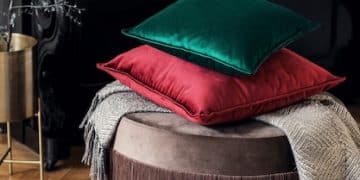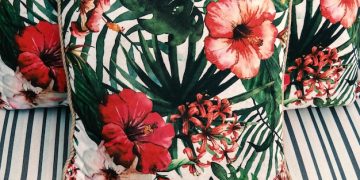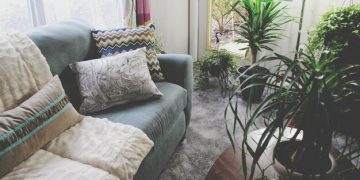Unleash the Power of Texture: Elevate Your Home Interior
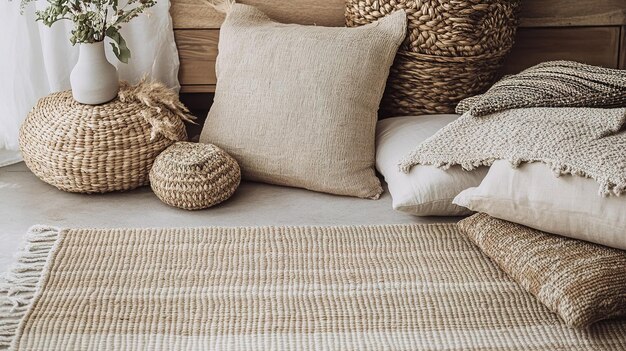
The power of texture in interior design lies in its ability to add depth, interest, and a tactile dimension to a space, transforming it from flat and uninviting to layered and visually engaging.
Ready to transform your living space from bland to grand? Discover the power of texture: adding depth and interest to your home interior is easier than you think. Let’s explore how incorporating different textures can elevate your space.
Understanding the Essence of Texture in Interior Design
Texture is a crucial element in interior design, often overlooked but incredibly impactful. It adds a tactile and visual dimension, enriching the overall aesthetic of a space.
More than just how something feels, texture refers to the surface quality of an object. Introducing a variety of textures can transform a room, making it more inviting and visually stimulating.
The Visual Impact of Texture
Visual texture plays a vital role in creating interest. Different textures reflect light in unique ways, influencing the mood and atmosphere of a room.
The Tactile Experience
Tactile texture appeals to our sense of touch. Imagine running your hand across a smooth, cool tile versus a rough, woven rug. These experiences add layers of sensory engagement.
- Creates Depth: Textures add layers and complexity to a room, preventing it from feeling flat.
- Enhances Visual Interest: A mix of textures keeps the eye engaged, making the space more dynamic.
- Adds Personality: Textures can reflect your personal style, giving your home a unique character.
In summary, understanding the essence of texture involves recognizing both its visual and tactile qualities. When thoughtfully incorporated, texture can significantly enhance the depth, interest, and personality of your home interior.
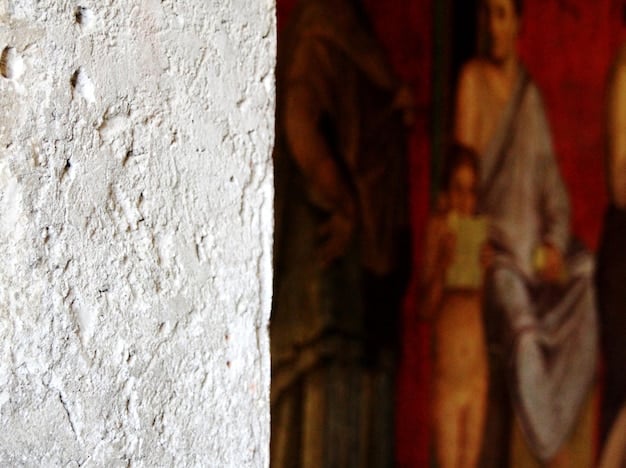
Key Types of Textures to Incorporate
Incorporating different types of textures is essential for creating a dynamic and visually appealing interior. Mixing and matching various textures can add depth and character to any room.
From natural materials to manufactured elements, there are countless ways to bring texture into your home. Let’s explore some key types of textures and how to use them effectively.
Natural Textures
Natural textures bring the outdoors in, creating a sense of warmth and authenticity. Think of materials like wood, stone, and natural fibers.
Manufactured Textures
Manufactured textures offer a wide range of possibilities, from smooth, polished surfaces to rough, industrial finishes. These can add a modern or vintage touch to your space.
- Wood: Brings warmth and natural beauty, whether in furniture, flooring, or accent pieces.
- Stone: Adds a sense of permanence and luxury, ideal for fireplaces or countertops.
- Fabrics: Linen, cotton, and wool offer different levels of softness and visual texture.
By carefully selecting and combining these key types of textures, you can create a harmonious and inviting interior that reflects your personal style and enhances the overall ambiance of your home.
Textural Elements in Different Rooms
The application of textural elements varies from room to room, depending on the purpose and atmosphere you wish to create. What works in a living room might not be suitable for a bedroom, and vice versa.
Understanding how to use texture in different rooms can help you achieve a cohesive and balanced design. Let’s explore some effective strategies for incorporating texture in various spaces.
Living Room
The living room is often the focal point of the home, making it an ideal space to experiment with textures. Layering different materials can create a cozy and inviting atmosphere.
Bedroom
In the bedroom, soft and comforting textures are key. Think plush rugs, velvety fabrics, and knitted throws to promote relaxation and tranquility.
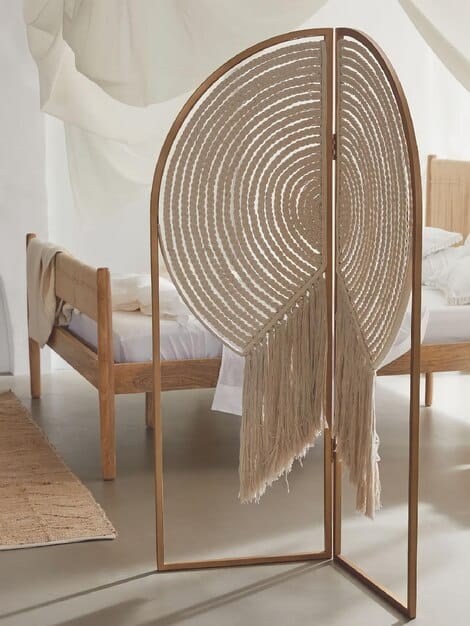
- Living Room: Use textured cushions, rugs, and wall art to add visual interest.
- Bedroom: Incorporate soft bedding, textured headboards, and cozy throws for comfort.
- Bathroom: Introduce textured towels, stone accents, and woven baskets for a spa-like feel.
In conclusion, considering the specific function and desired ambiance of each room is essential when incorporating textural elements. By carefully selecting and layering textures, you can transform your space into a harmonious and inviting home.
How to Layer Textures Effectively
Layering textures is an art that involves combining different materials and finishes to create a cohesive and visually interesting space. When done well, layering can add depth, warmth, and personality to your home.
However, it’s important to approach layering with a thoughtful strategy to avoid overwhelming the senses. Let’s explore some effective techniques for layering textures in your interior design.
Start with a Base Texture
Begin by establishing a base texture that sets the tone for the room. This could be a smooth wall, a hardwood floor, or a neutral rug.
Add Contrasting Textures
Introduce contrasting textures to create visual interest. Combine smooth and rough, soft and hard, or matte and shiny surfaces.
- Balance: Ensure a balance between different textures to avoid overwhelming the space.
- Color Harmony: Choose textures in colors that complement each other for a cohesive look.
- Focal Point: Use texture to draw attention to a specific area or feature in the room.
In summary, layering textures effectively involves careful planning and consideration of balance, color harmony, and focal points. By starting with a base texture and adding contrasting elements, you can create a layered and visually dynamic interior that reflects your personal style.
Common Texture Mistakes to Avoid
While texture can greatly enhance a space, it’s also easy to make mistakes. Overdoing or misusing texture can lead to a cluttered or uninviting environment.
Recognizing these common pitfalls can help you create a balanced and harmonious design. Let’s explore some texture mistakes to avoid to ensure your home looks its best.
Overloading on Texture
Too much texture can overwhelm a room, making it feel busy and chaotic. It’s important to strike a balance and avoid using too many different textures in one space.
Ignoring Scale
The scale of textures should be appropriate for the size of the room. Large, bold textures can overpower a small space, while delicate textures may get lost in a large room.
- Too Many Patterns: Mixing too many patterns with different textures can create a visually confusing space.
- Lack of Cohesion: Ensure textures complement each other and fit within the overall design scheme.
- Ignoring the Room’s Purpose: Choose textures that are appropriate for the function and atmosphere of the room.
In conclusion, avoiding common texture mistakes is crucial for creating a balanced and inviting interior. By being mindful of overloading, scale, patterns, cohesion, and the room’s purpose, you can effectively use texture to enhance your home’s aesthetic appeal.
The Future of Texture in Interior Design
As interior design evolves, so does the use of texture. New materials, technologies, and design philosophies are shaping the future of how we incorporate texture into our homes.
Keeping an eye on these emerging trends can help you stay ahead of the curve and create a space that feels both modern and timeless. Let’s explore some trends that are likely to shape the future of texture in interior design.
Sustainable and Eco-Friendly Textures
With a growing emphasis on sustainability, eco-friendly textures are becoming increasingly popular. Materials like bamboo, recycled glass, and reclaimed wood are gaining traction.
Innovative Technologies
Advances in technology are creating new possibilities for texture. 3D-printed textures, smart textiles, and interactive surfaces are on the horizon.
- Biophilic Design: Incorporating natural textures to connect with nature and improve well-being.
- Minimalism: Using texture to add depth and interest to minimalist spaces.
- Personalization: Tailoring textures to reflect individual preferences and lifestyles.
In summary, the future of texture in interior design is being shaped by sustainability, technology, and evolving design philosophies. By embracing these trends, you can create a home that is both stylish and forward-thinking, incorporating textures that enhance your living experience while aligning with your values.
| Key Point | Brief Description |
|---|---|
| ✨ Visual Impact | Texture adds depth and visual interest to rooms. |
| 🧱 Key Textures | Wood, stone, and fabrics each offer unique tactile qualities. |
| 🛋️ Room Elements | Living rooms benefit from cushions and rugs; bedrooms from soft bedding. |
| ⚖️ Layering | Balance is key! Start with a base and add contrasting textures. |
Frequently Asked Questions (FAQ)
▼
The main benefit is that texture adds depth and visual interest to a space, transforming it from flat and uninviting to layered and engaging. It enhances the overall aesthetic appeal.
▼
In a small apartment, focus on strategic placements like textured throw pillows, rugs, or wall art. Avoid overcrowding the space with too many textures; keep it simple and cohesive.
▼
Affordable options include textured blankets, DIY wall art using textured paint, or repurposing old clothing into textured cushions. Thrift stores can also be a great source.
▼
Yes, it is possible. Overloading a room with texture can make it feel cluttered and overwhelming. The key is to find a balance and ensure textures complement each other.
▼
Lighting significantly impacts textures. Natural light enhances the depth and dimension of textures, while artificial light can alter their appearance. Consider this when choosing textures for different areas.
Conclusion
In conclusion, the power of texture: adding depth and interest to your home interior is a transformative design element that can elevate any space. By understanding the different types of textures, how to layer them, and common mistakes to avoid, you can create a home that is both visually appealing and personally enriching.

